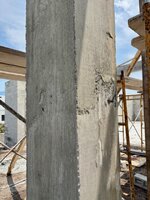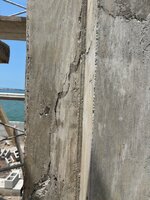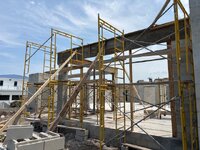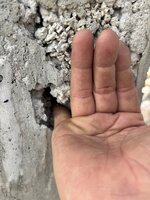I was informed that the column in the photo was poured in 2 pours with a cold joint in the middle portion of the column. The cold joint looks to me like it occurs right where the column is cracking. The column is for a two story high end residence and is oversized for the loads however it does support lateral wind loads and some MWFRS loads for the house.
It looks bad to me so my instincts are to tell the contractor to demo the column and repour the column and beam above.
Also to add to the issue, the contractor did not get a break test at the column. We are exploring getting a Schmidt hammer test to confirm the compressive strength of the concrete.
Please let me know your thoughts
It looks bad to me so my instincts are to tell the contractor to demo the column and repour the column and beam above.
Also to add to the issue, the contractor did not get a break test at the column. We are exploring getting a Schmidt hammer test to confirm the compressive strength of the concrete.
Please let me know your thoughts






